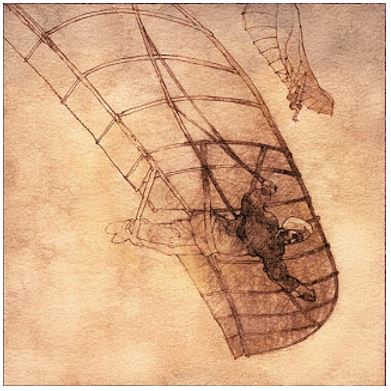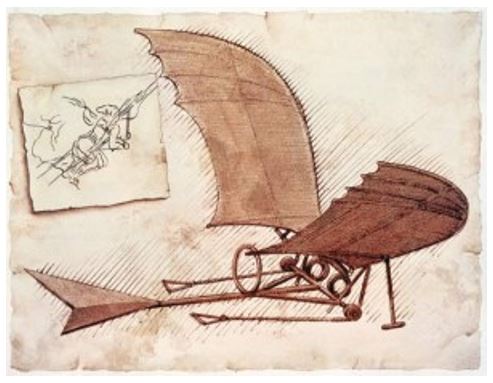Introduction
The history of modern aviation dates back to several centuries ago when men with creative minds started developing structures that would enable them to fly. According to MacKenzie(78), historians have not been able to precisely construct the actual history of aviation to determine people who first attempted to fly. Most of them remain unrecorded, making it almost impossible to trace them. The Wright Brothers have been credited for having developed the first flying machine that could carry human beings, making the dream to fly a reality. However, Petrescu (33) says that other people had made successful attempts to fly centuries before the Wright Brothers were born. This paper traces the history of aviation from as early as the days of Abbas Ibn Firnas.
Reasons for Choosing The Project
The researchers chose this project because of their interest in the aviation sector. Aviation has experienced massive developments since the first man in history attempted to fly. Aviation engineers have worked tirelessly to come up with better designs of flying machines that not only enable individuals to fly from one part of the world to another safely but also with great comfort. Speed, comfort, and safety are currently the key issues to deal with in the aviation world. However, it is equally important to reflect on the history of flying and contributions made by the pioneers in this field.
The Participants and Research Design
This research involved four participants who worked as a unit to gather relevant data and compile the report. The group conducted interviews and reviewed existing literature to collect data for the research. The first two group members went to collect data from engineers, pilots, and other officials who know the aviation industry at Dubai International Airport. The second group went to Interview lecturers at Emirates Aviation University, especially the historians. Secondary sources of data such as books, journal articles, and reliable online sources were also used.
Contributions of Abbas Ibn Firnas
According to Williams (114), there are historical accounts that show that Abbas Ibn Firnas was one of the earliest people who successfully attempted to fly using uniquely designed structures. Abbas was a physician, an aviator, an inventor, an engineer, a poet, and a musician. Just like many great intellectuals of his time, he worked in various academic fields, and the aviation sector was one of them. His interest in developing a structure that can help human beings fly started in 852 CE when he saw a man named Armen Firman struggling to fly using a crudely developed parachute. He was not successful, but from it, Abbas learned some concepts about flying and he was interested in developing them.
Abbas Ibn Firnas took some time to come up with an appropriate structure that could enable him to fly. After some time of critical thinking, he concluded that the best way of doing this was to study birds and bats. He studied their wing structure and how they behaved when taking off and landing. From his analysis, he developed the structure below.

It is important to note that Abbas’ structure tried to mimic the design of a bird as much as possible. In his vision, he was trying to recreate a skeleton of a bird and fit it with appropriate materials to enable it to carry a human being in the air for some time. The figures above show that in his mind, Abbas believed that there is something unique in the overall design of a bird that enabled it to fly. The secrete, according to him, was in the wings. According to existing historical accounts, Abbas was able to be airborne using this structure for about 8-10 minutes, an achievement that no man in history had ever recorded. That was in 875 when he was 70 years.
It is important to note that his design did not put into consideration several factors that made it ineffective, especially when it came to a landing. Abbas’ stay on air was relatively a success, but the problem came in terms of landing. He was not able to control the speed of landing, a problem that resulted in an accident. He was hurt from this attempt, and he never made any other attempt to fly. However, he made important observations that have defined the modern aviation industry. He said that the major shortcoming of his design was his inability to control the landing speed and design the way birds do. To this day, landing is still the most dangerous stage of an airplane.
Contributions of Leonardo da Vinci
According to Polmar and Genda(74), Leonardo da Vinci was one of the greatest scientists that ever lived on earth. His works in Physics, Medicine, Constructions, and Designs remain relevant in modern society. Leonardo was very creative in solving problems that affect humanity. Just many people during his time, he was concerned about flying. He had not interacted with the works of Abbas in his academic life, hence he was not influenced by them. Being an expert in painting, he sketched a glider that one can use to fly if properly developed. He developed his first glider in 1488. This was never developed. In 1496 he sketched and built another glider for a test drive. Unfortunately, the structure did not fly as he anticipated.
The figure below shows the glider that Leonardo da Vinci developed for a test flight. It is important to take note of the striking resemblance between Leonardo’s glider and Abbas’ parachute. They both had the idea of constructing a structure that resembled a bird as much as possible. According to Young (298), it is not yet clear why Leonardo’s structure never flew because the materials available at that time could have facilitated the intended flight.

Reasons for Failure of Leonardo’s Glider
Leonardo’s glider was able to fly because of several flaws in its development. The design that was developed was fine, but the construction process failed to observe fundamental principles of flying, making it impossible to be airborne. Some historians and critics have blamed Leonardo himself for his lack of interest in developing a functional structure. He never made a personal attempt to fly his structure, a fact that made it unnecessary for him to pay special attention to the construction.
The Balloons, Parachutes, and Kites
According to Young (299), the aviation sector continued to develop in various parts of the world after the experiments done by Leonardo da Vinci. Hot air balloons were some of the earliest instruments used to fly. Bartolomeu de Gusmão is credited for having developed a successful hot air balloon in 1709 that could be used by a human being. However, it was not safe, especially when it came to a landing. In the 1850s, parachutes became very popular among inventors who were keen on flying. Louis Charles Later developed a parachute whose design was based on the structure developed by Leonardo in the previous years. In the late 1890 and early 1900, kites became popular as they lowered the risks of crashing when landing.
The Wright Brothers
According to Williams (41), history has unfairly given all the credit of modern aviation to the Wright Brothers. However, the truth is that they were able to solve aviation problems that their predecessors were unable to address for centuries. First, these inventors developed a roll control system by using wing warping. This solved the problem of controlling the craft while it is airborne. The combination of roll and yaw made it possible for the pilot to determine the direction of the flight. Controlling the system was not easy because everything was done manually. However, this was a major step towards the modern aviation that is in use today.
The Wright Brothers wrote some of the basic rules and concepts of aeronautical engineering when they developed Wright Flyer. Never before in aviation history had anyone come up with means of powering an aircraft towards a given desired direction. Wright Flyer. In 1900, they started developing powered gliders. These gliders had an internal combustion engine that they developed specifically to carry the weight of the craft. As Petrescu (87) notes, these gliders proved very successful, especially because of the effort put in by these inventors. They continued to remodel the craft to eliminate some of the weaknesses they detected. The brothers worked on their Flyer model from 1904 to 1905 to make the machine easier and simpler to control. In late 1904, Wilbur Wright recorded a flight of 59 seconds at 852 feet off the ground. This was a major success.
Moving to Modernity
On October 5, 1905, the Wright Brothers developed the first practical aircraft capable of flying under full control without subjecting the pilot to a crash during landing. On this day, they flew for about 40 minutes, covering a distance of 24 miles. This success opened the aviation sector to modernity. The period leading to the First World War saw many countries struggle to modernize their aviation sector as it was considered a major source of power. In Europe, countries such as Britain, France, and Germany started funding projects meant to develop this sector. By 1910, the V-8 engine format had become very popular not just in the United States, but also in Europe (Syon 355). Major Airline Companies such as Boeing and Airbus soon took over the construction of the planes.
Conclusion
This study helped the researchers to learn a lot about the early history of the aviation sector. The bibliographic research informed the researchers that the contributions of people like Abas bin Fernas and Leonardo da Vinci in developing flying crafts have been forgotten. However, they made the initial steps in convincing the world that flying is possible. The observation made on the current models of aircraft shows that a lot is borrowed from the designs developed by these ancient innovators. From the interviews, it was clear that the modern aviation industry is based on the concepts developed by Wright Brothers. The main challenge faced in this study was to find people who knew the history of the aviation sector. This research has numerous positive results, especially in pointing out the stages the aviation sector took to arrive at modern sophisticated crafts.
References
MacKenzie, David. CAO: A history of the International Civil Aviation Organization. Toronto: University of Toronto Press, 2010. Print.
Petrescu, Relly. Aviation history. New York: Books on Demand, 2010. Print.
Polmar, Norman, and Minoru Genda. Aircraft carriers: 1909-1945 a history of carrier aviation and its influence on world events. Washington: Potomac Books, 2006. Print.
Syon, Guillaume. What the Wrights Wrought: The Centennial of Flight in Recent Literature. Technology and Culture 45.2 (2004): 350-357. Print.
Williams, James. History of Army aviation: From its beginnings to the War on Terror. New York: iUniverse, 2009. Print.
Young, David. Chicago Aviation: An Illustrated History. Indiana Magazine of History 101.3 (2005): 297-299.